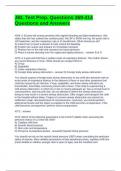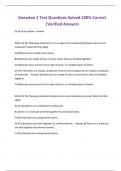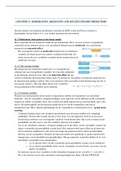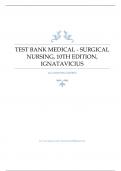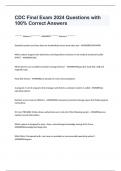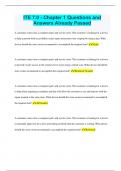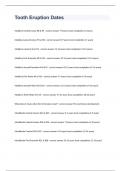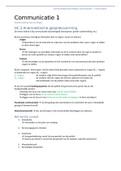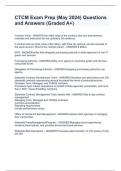Exam (elaborations)
JBL Test Prep. Questions 369-414 Questions and Answers
- Course
- Institution
JBL Test Prep. Questions 369-414 Questions and Answers #369: A 30-year-old woman presents with vaginal bleeding and light-headedness. She states that she has soaked four sanitary pads. Her BP is 90/50 mm Hg, her pulse rate is 120 beats/min, and her respiratory rate is 24 breaths/min. What should y...
[Show more]
